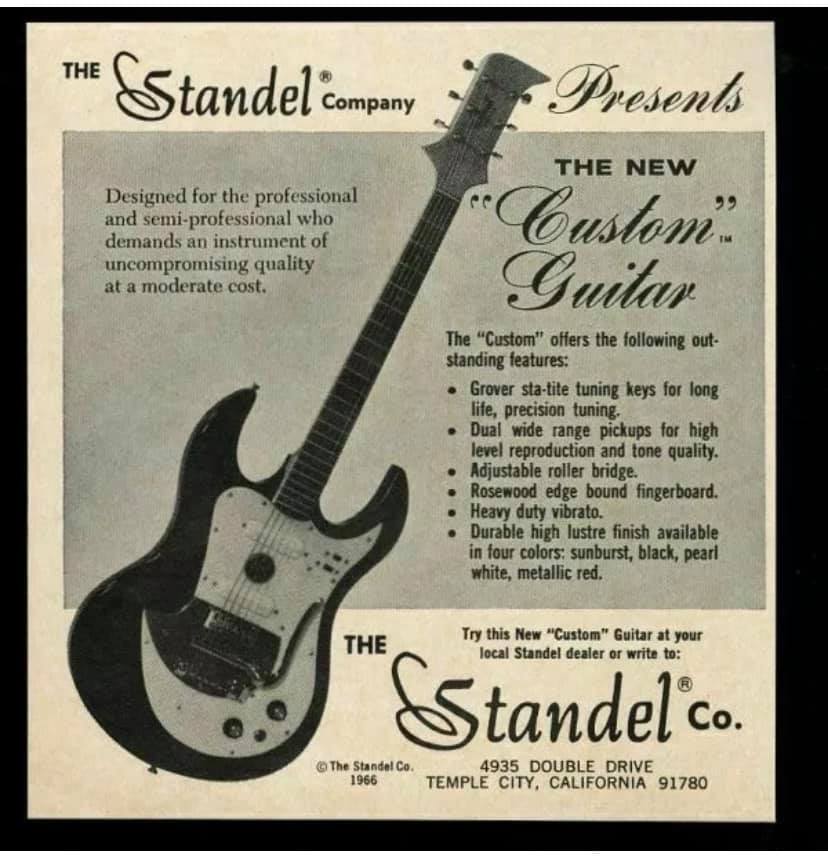November 2023
Harptone, Standel, and Supreme Guitars
Some of the information presented in this monograph on The Harptone Co. and the guitars it produced is the result of reasonable assumption and deduction. There are gaps in factual information with little or no possibility of filling them because the people actually involved have either passed on or are not available to provide the information.
The Early Years
Sometime in the mid 1960s The Harptone Company of Newark, NJ, owned by Sonny Brooks and previously known for building instrument cases, began producing acoustic guitars designed by and under the supervision of luthier Sam Koontz. These guitars were branded with the “Supreme” name. This name actually goes back to the early 60s when Mr. Koontz worked at the Philadelphia Music Co. in Limerick, PA. There are several classical style guitars that came from this endeavor. It is not known how the business transferred from Pennsylvania to New Jersey but it is possible that Bob Crooks, the owner of the Standard Electronics of Temple City, CA played a role. Mr. Crooks was producing Standel guitar amplifiers that were distributed by the Philadelphia Music Co. at the time and he wanted to include a line of guitars to go along with them.

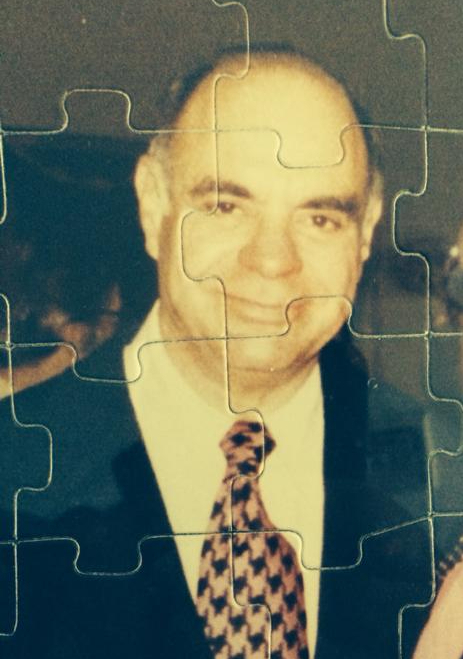
Sonny Brooks
Standel Production
Starting in 1967 and ending in 1968 The Harptone Co. in association with Sam Koontz produced approximately 300 guitars for Bob Crooks Standel Co. featuring unique features such as the “bulls head” head stock, a zero fret and others that will be described later as they relate to either acoustic or electric instruments. Harptone guitars were also manufactured during these two years and the two lines are identical except for the naming.
Harptone Production
After 1968 and the end of the association with Bob Crooks and Standel, Harptone continued to build guitars under their own name, both acoustic and electric. Electric guitars were discontinued after 1969 and production of the acoustics continued in New Jersey until Harptone was sold to Diamond S, owned by the Sturgills – Larry, Dan, and John in 1975. Sam Koontz ended his relationship with Harptone in 1972 but continued to build and produce his own Koontz branded guitars.
Harptone also contracted with the Conn company and built acoustic dreadnought guitars for them under the Conn name. Yamaki of Japan sold Harptone guitars and then later produced under license their YB line, similar to the Harptones.
Diamond S
After purchasing the Harptone guitar business (Harptone continued their case business) the Sturgills moved production to Independence, VA. The zero fret was discontinued but other features were maintained such as the bulls head and the arch backs. The serial number format was also changed. Diamond S production ended in 1980 along with the Harptone guitar brand.
At the time of the sale to Diamond S, there was an inventory of parts. These were given to employees who then produced guitars which have turned up in circulation. These do not have labels and may or may not have typical Harptone features.
Total production of Harptone branded guitars is estimated to be in the 5000 to 7000 range but all manufacturing records have been lost and there is no reliable accounting on this. Today Harptone built guitars are rare, highly regarded, and considered to be high quality instruments.
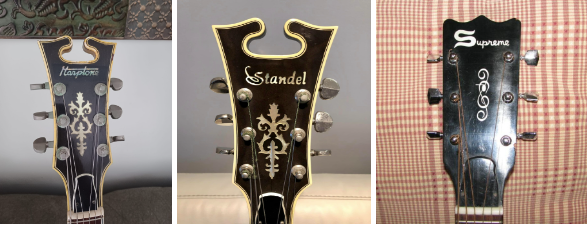
The Models
Acoustic Guitars
The majority of instruments built by Harptone, whether branded as Harptone or Standel are of identical acoustic design. For a full description of these guitars refer to the Brochure page. The Supreme acoustics follow different model nomenclature and will be discussed later. There are no known Supreme electric guitars.
The Harptone acoustic guitars featured some unique features not usually found on comparable guitars:
The distinctive “bulls head” peghead
Zero Fret
Arch back (except for Zodiac, and early Supremes)
Adjustable bridge, up to 1972
The acoustic steel string guitars can be one of two constructions:
Sitka spruce top, laminated mahogany sides and back, mahogany neck and rosewood fretboard
Sitka spruce top, laminated maple sides and back, maple neck and rosewood fretboard
As mentioned with regard to the Zodiac, Harptone guitars can be either arch back with no back bracing or flat back with bracing. The former, the arch back design, is a notable feature of Harptone acoustic design, it differentiates them from most other brands and contributes to their resonant and deep tone.
There is also a classical Harptone guitar, known as a Renzi. They came in two models, the Renzi 100 with mahogany back and sides, and the Renzi 200 featuring curly maple back and sides. Both have alpine spruce tops, rosewood bridge, 19 fret rosewood fingerboard, and a hand carved headstock featuring German tuners. The origin of the name Renzi is unknown, it may be connected to Argentinian luthier Victor Renzi whose signed label in a Harptone guitar appeared, located in Buenos Aires. No photos of Harptone Renzis are available but several Supreme classical guitars are known to exist and are discussed later.

Eagle
Of the roughly 170 known Harptone guitars, most are Eagles and carry the model designation E-NNXX.
E Eagle, dreadnought style
NN Number of strings, 6 or 12
XX Finish, natural, sunburst, black. The second digit can designate the wood
All of the other acoustics follow similar model designations.
There is also an acoustic bass as well, designated B4.
Electric Guitars
The electric Harptones, mostly branded as Standels come in two styles:
Hollow body jazz type, called the Deluxe Artist or Deluxe Line
Semi-hollow body or thinline type
Deluxe Artist
The Deluxe Artist guitars are full bodied instruments (except for the 820 and 810) with a carved spruce top, carved maple back, 5 ply laminated neck of maple and mahogany, and a deep single florentine cutaway. These guitars include many features that would be expected in a high end instrument. For full descriptions the reader is referred to the Brochures page.
Deluxe Line
The Deluxe line of electric guitars features both full bodied (550, 710) and thinline, semi-hollowbody instruments (530, 520, and 510). The 550, 710, and 530 feature single florentine cutaways, the 510 a double florentine cutaway, and the 520 double rounded cutaways. The Deluxe Line guitars include enhancements not present in the Standard Line, for full descriptions see the Brochure page where S=sunburst finish, C=cherry finish.
Standard Line
The Standard Line mostly follows the Deluxe Line but without the deluxe enhancements such as block fretboard inlays and a master volume pot on the lower cutout. The Model 610 is a full bodied single florentine cutaway, the 430 a thinline single florentine cutaway, the 410 double florentine cutaway, and the 420 double rounded cutaways. There is also an electric bass, the Model 400.
The Supreme Guitars
There is no direct information regarding the enigmatic Supreme line of guitars, everything is an educated guess. It was initially thought that they were a prototype line but the numbers and array of models that have surfaced suggest otherwise. Some have a designation on the label, “MADE EXPRESSLY FOR SAM ASH MUSIC STORES”, so some of these guitars at the least were intended for commercial purposes. All of those are flat back with back braces which suggests an early version since most of the later Harptone and Standel acoustics had the arch back.
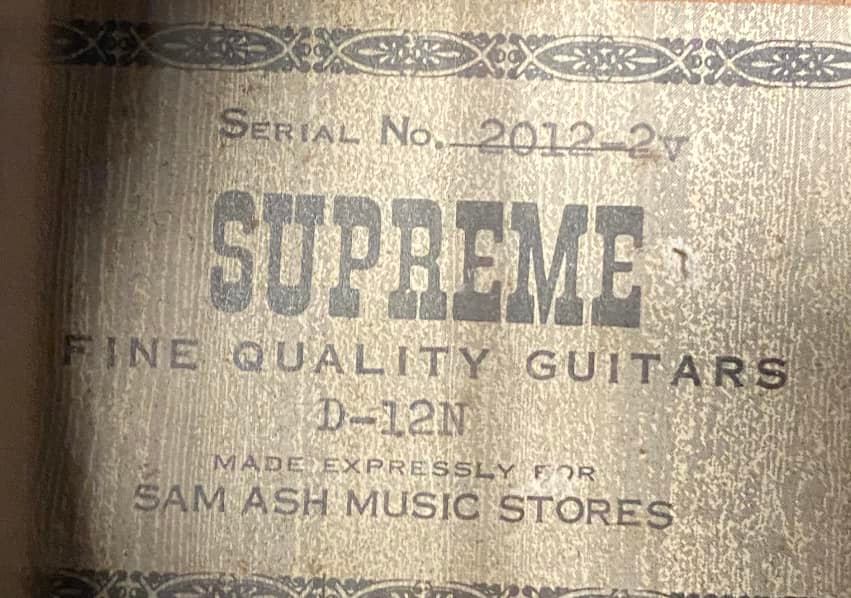
The Supreme model numbers partly align with the Harptones and Standels.
They are:
A-XXNN
D-XXNN
E-XXNN
J-XXNN
L-XXNN
S-XXNN
Z-XXNN
The A- , D- , E- , and Z- models are all dreadnought style. The Z- (assumed to mean “Zodiac”) is flat back. The J- model is similar to the Harptone jumbo Lark and the E- and D- models are similar to Harptone or Standel Eagles. The L-XXNN Supreme models that have shown up are similar to Harptone Pioneers, a small jumbo style.
There is one more very important Supreme model, a classical version similar to the Harptone Renzis. It is not known if that name applies to the Supremes. These guitars could provide a significant link between the early and later Koontz/Harptone guitars. In three of the ten currently known classical Supreme guitars the label references The Philadelphia Music Company in Limerick, PA, a place where Sam Koontz is known to have worked in the early 60s. Another interesting feature of these labels is the lettering style of “Supreme”. Most Supremes feature an “old west” lettering style but in these three guitars referencing the Philadelphia Music Co, the lettering matches the style seen on later Supremes that came later from Harptone. No definitive conclusions can be drawn but the inference is clear that these guitars could be the precursors to later Harptone and Standel guitars.

Diamond S guitars
With the sale of the Harptone guitar business to Diamond S in 1975, production was moved to Independence, VA. The zero fret was discontinued but the model lines initially remained the same,
This is from the 1977 Diamond S price list:
E-NNXX
L-NNXX
S-NNXX
Z-NNXX
RS-NNXX
B-NX
But the model numbers were later changed.
In or around 1978, Larry Sturgill contracted with Yamaki to build Harptone guitars of his latest iteration with braced flat backs like the Zodiacs. Fifty instruments were produced but were lost in transit and presumably stolen. Only one of these has ever been seen.

Other Companies/Business Ventures
Harptone established business relationships with both Conn and Yamaki of Japan. They produced 200 dreadnoughts for the Conn company, 100 six and 100 twelve string guitars. The body was a maple Eagle with a Conn head stock. Yamaki sold a number of Harptones in 1973. They then copied the designs and produced the Yamaki YB series in 1976.
Famous Artists Who Played Harptone Guitars
There are at least two famous artists who owned and played several Harptone guitars, George Harrison and David Bowie. Both owned several Harptones, six and 12 string.
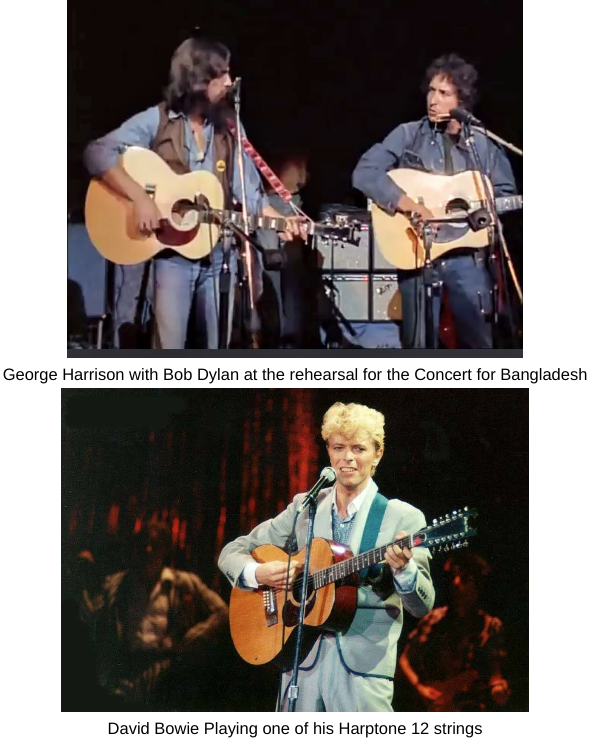
Present Day Understanding of Harptone, Standel, and Supreme Guitars
The study of these unique guitars is ongoing, mostly through the efforts of administrators and members of the Facebook group “Standel, Harptone, and Supreme Guitars”, and any visitor to this website with any new information is encouraged to contribute here or with the Facebook group. In the meantime owners of these fine guitars will continue to play and enjoy them knowing their special place in guitar history.
A note on Semie Moseley and Hallmark Standel guitars
In the 1960s some Standel branded guitars were built in California by Semie Moseley of Mosrite fame and Hallmark Guitars under Joe Hall. These guitars have a very interesting history but are outside the scope of this site, interested readers are encouraged to search for information under those headings or simply, “Standel guitars”.
